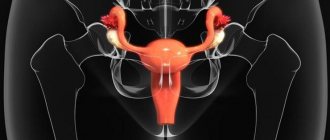For many Russian women, a weekly visit to the bathhouse is a national ritual of healing and rejuvenation. The Bath Code prescribes taking a steam bath with a broom, dousing yourself with cold water, making masks and wraps, and drinking herbal tea. Needless to say, the Russian bathhouse is a worthy answer to European SPA complexes.
During pregnancy, true bath attendants have a reasonable question. Is it possible to continue going to the bathhouse or is it better to wait until the baby is born? After all, a period of nine months is not so short. Is it worth depriving yourself of one of the few pleasures during a period of all kinds of taboos?
Is it possible or not?
The bathhouse has a lot of useful qualities:
- strengthens the immune system;
- helps prevent skin diseases;
- has a positive effect on the nervous system;
- eliminates waste and toxins;
- eliminates uterine tone;
- improves blood supply to the placenta;
- helps with varicose veins;
- relieves swelling;
- steam has a positive effect on the skin and prevents the appearance of stretch marks;
- prevents embryo hypoxia;
- reduces stress and improves well-being.
Despite the positive aspects, visiting the bathhouse is not recommended for pregnant women. Before arranging procedures, you need to consult a gynecologist.
In the early stages, when the fetus is developing, a sauna is not recommended. During this period, the laying of the child’s organs occurs, and surrounding factors have an influence.
In the first trimester, a bath can cause bleeding and miscarriage.
If long before pregnancy a woman regularly went to the bathhouse, then there is no need to worry. It would only be advisable to reduce the number of visits and the length of stay, especially in the first weeks. If the woman in labor was not a regular client of saunas, then you should not start, it will be stressful for the body.
In the second trimester, bath procedures, if the recommendations are followed, have a positive effect on the woman and the fetus. This is the most favorable period.
Before giving birth, you should take a break, because a sharp change in temperature can cause rupture of the membranes, placental abruption, and premature birth.
The benefits of vaping
When vaping:
- Metabolism is normalized, fluid balance in the body is restored. Swelling disappears. Profuse sweating helps eliminate harmful toxins and toxic substances.
- The functionality of the immune system improves by 2 times. A woman carrying a child experiences a hormonal reboot in her body, which leads to a deterioration in the functioning of the immune system. A woman becomes susceptible to various colds, viral and fungal diseases, which in her situation is undesirable and dangerous. Vaping avoids these problems.
- Nerves are strengthened. A woman becomes calmer, especially if steam procedures are accompanied by massage, lubricating the body with creams and applying medicinal masks. Warm air enhances the effect of visiting such places.
- The condition of the skin improves. Steaming is suitable for preventing stretch marks.
- The vascular and respiratory systems are toned, preparing the expectant mother for childbirth.
- Fatigue and muscle tension disappear.
- The placenta, which protects the baby, is better nourished, which eliminates the risk of the baby developing oxygen starvation.
Which baths can you go to during pregnancy?
There are different types of baths: Russian, Finnish, hammam, infrared sauna. Which one can pregnant women visit?
Is it possible to go to the hammam?
In a Turkish hammam the temperature is 45-50 degrees, humidity reaches 90%. Because of this, there is practically no sweating, and all that drains from the body is condensation due to high humidity. Therefore, pregnant women can visit such a bath; one or two hours is enough, if there are no other contraindications.
Are pregnant women allowed to go to the Russian bathhouse?
The Russian bathhouse has a high temperature, on average 60-80 degrees.
Humidity about 80%. The body quickly warms up and sweating begins. It is recommended to stay for three to six minutes. It is better to make more visits for a short time than one, but long one.
Is it worth going to the sauna?
You can usually visit the sauna, but this should be discussed with your doctor.
A trip to the Finnish sauna should be avoided while you are pregnant. There is a high temperature - 120 degrees, dry air. Sweat evaporates from the skin instantly, but some remains in the air of the visit. As a result, it is inhaled back and returned to the body.
Infrared sauna during pregnancy
An infrared sauna warms up the body thanks to special infrared rays. They are harmless, but penetrate deep into the tissue. A pregnant woman should consult a doctor before going on a hike.
Harm of the bath
Although steam procedures have valuable properties, they also have negative sides. Mothers should clearly remember that not everything that is useful for the majority is also useful for them, since each organism is different. Therefore, you don’t need to run to the bathhouse to get the benefits; you first need to consult with a specialist.
It is very useful to breathe in the fresh sea air
The disadvantages of bath procedures include rapid heartbeat, which is observed after such an event. In addition, the patient may experience a worsening of chronic illnesses, even those that were previously unknown. In the sauna, the risk of dehydration of a pregnant woman, nausea or dizziness increases. Such conditions can adversely affect the child. Therefore, it is important to clearly know when pregnant women can go to the bathhouse, and when they should abstain from it.
When can you go to the sauna?
Before twelve weeks of pregnancy, gynecologists do not recommend visiting any sauna.
At this time, organs are formed in the embryo, external factors have an influence, negative and positive. Especially if the woman feels unwell. The best option for visiting is the second trimester. Provided that the expectant mother is in good health and follows the rules and recommendations of the doctor.
Recommendations for visiting the sauna:
- you need to cover your head with a scarf or a special hat;
- Between trips to the steam room, be sure to drink tea or compote. This promotes rapid sweat release and cleansing of the body;
- after the steam room you need to cool down in another room, twice as long as usual;
- in the steam room you can only be on the bottom shelf;
- Rubber slippers on my feet.
Under no circumstances should you go to the sauna if:
- placenta previa;
- skin inflammations;
- urinary system infections;
- low pressure;
- general malaise;
- bleeding.
If a woman visited a sauna before pregnancy, then in the middle of pregnancy this can sometimes be allowed, based on her general condition. But you shouldn’t start without experience.
Visiting rules
A Turkish bath is considered the safest for pregnant women, the temperature in which does not exceed 50 degrees and the humidity is one hundred percent. On heated marble, all joints and ligaments warm up perfectly, their elasticity increases, and pain in the back disappears. And gradual alternations of temperatures without sudden changes provide the maximum possible benefit for the pregnant woman, excluding negative effects on the body. In order for bath procedures to bring only benefits and not have a negative impact, you should follow some rules.
Firstly, it is unacceptable to visit the sauna without consulting a doctor. The woman must have permission for such sessions from an obstetrician-gynecologist. Only a doctor will be able to accurately determine whether a patient has contraindications for paired sessions. Secondly, you should never go to the bathhouse alone. Mommy may just feel dizzy or feel generally unwell. And the companion can react in a timely manner and provide the pregnant woman with the necessary assistance. Compliance with these rules will help avoid adverse consequences for the patient and her baby.
- The duration of the event can be absolutely any, however, you can be in the steam room for a maximum of 10 minutes for the entire evening (several visits for two or three minutes). There should be at least a quarter of an hour between visits to the steam room.
- You should only lie on your side in the steam room. If the period is 2 trimester or more, then it is strictly unacceptable to lie on your back in the bathhouse, otherwise the inferior vein will be compressed, leading to a sharp deterioration in the patient’s well-being. And it is better to choose the lower shelves in the steam room, where the temperature readings are not so high.
- Before the steam room, you should not wet your body or hair, otherwise the skin pores will become clogged, which complicates the release of sweaty secretions, and with it toxic and waste substances.
- During the procedure, temperature indicators should be monitored, not allowing them to rise above 70°C, and ideally – 50°C. To avoid overheating, you should wear a felt hat on your head.
- Be sure to use only your own things (sheets, towels or flip flops), and before sitting on the shelves, you should lay out a towel.
- You need to be more attentive to your own feelings; if alarming signals such as dizziness or discomfort suddenly appear, then you need to immediately leave the steam room.
What else do you need to know
In the sauna, it is important to maintain a drinking regime by drinking more drinks such as herbal tea, still mineral water or rosehip infusion. Drinking plenty of fluids will help increase sweat production, which will increase the removal of salts and toxins from the body.
Cool watermelon is the best food in the hot season
Before leaving the bath, you need to wait until the body cools down on its own; this can take from half an hour to 60 minutes.
So that the procedures work exclusively for the good. You need to attend such events once every 7-10 days.
Experts do not recommend that mothers visit public washing facilities.
Prohibitions in the early stages
The weeks of the first trimester are considered by obstetricians and gynecologists to be the most dangerous, since interruption is possible even under the influence of completely harmless factors such as climate change, swimming in too cool water or overheating (including in a sauna), or emotional experiences. Sometimes it happens that a patient, unaware of conception, goes to the bathhouse to warm up and get rid of the signs of a mild cold. And due to overheating, the neck opened and an interruption occurred.
Overheating in the early weeks of gestation is also dangerous because the body is in an unusual and unusual state to which it has not had time to adapt. Therefore, during these weeks you need to take care of it and avoid any aggressive influence from the outside. In a sauna, this effect comes from contrasting temperatures, when after a hot steam room you really want to cool off in a cool pool or in the shower, but this is strictly forbidden during pregnancy. You need to cool the body slowly, for example, with warm tea. Until 12 weeks, all patients, even avid bath attendants, should avoid visiting the bathhouse.
Features of the bath for the 2nd trimester
With the onset of the second trimester, when the formation and formation of the baby’s most important organs and placental structures has ended, doctors are more favorable to bath procedures for a pregnant woman. Visiting the steam room is no longer so dangerous; temperature changes are no longer a threat. Although some restrictions still remain.
For example, in the second trimester, bathing activities should be avoided by pregnant women who are prone to increased blood pressure, often suffer from increased uterine tone, or have recently suffered an exacerbation of any chronic illness. According to doctors, the second stage of gestation is considered the calmest period of gestation, when the patient can afford a lot. If I want, I go to the bathhouse, if I want, I go to the sea, etc. But such freedom of action is relevant only for those patients who have no contraindications.
Is it possible at a later date?
With the onset of the second half of the third trimester, obstetrician-gynecologists again recommend limiting visits to the bathhouse. The reasons are related to the possible negative impact of such events.
- By the third trimester, the volume of circulating blood doubles. It is quite difficult for the heart muscle to cope with such loads, so it works for wear and tear. And if you add to this overheating in the sauna, then the vascular system and myocardium may malfunction and cannot cope with the stress.
- At this stage, overheating in the bathhouse is fraught for the pregnant woman with premature detachment of placental tissues, the development of gestosis or threatening bleeding.
- At this stage, most pregnant women begin to have venous problems, hemorrhoids and varicose veins develop. And the hot air of the sauna contributes to the worsening of varicose veins, because vascular tone decreases and the veins dilate even more, which is very undesirable.
Such risks force doctors to limit bath procedures to pregnant women in the last trimester, although there are few strict contraindications. If the patient has cardiovascular and renal pathologies, hypertension, varicose veins, then visiting the bathhouse is prohibited. In addition, it is better for pregnant women who are not in very good health to avoid such events.
Is it possible to steam?
You can steam, but it is not advisable. It all depends on the general condition of the expectant mother.
Steaming is prohibited until twelve weeks of pregnancy!
Such procedures cannot be carried out in case of difficult pregnancy, varicose veins and other health problems. You need to listen to your body; if something interferes or causes even slight discomfort, then you should refuse to visit the steam room.
With the consent of the doctor, you can take a steam bath for bath procedures and if the mother in labor is feeling stable, but you must not forget about the recommendations:
- The temperature should not be higher than 70 degrees.
- The residence time is two, three minutes.
- You cannot take contrasting procedures, for example, from a steam room to an ice pool, etc. Cooling in the waiting room is acceptable.
- When drinking herbal teas, you need to carefully study the composition. Some herbs are prohibited during pregnancy.
- Be sure to be with someone else. Pregnant women are sometimes clumsy due to their shifted center of gravity.
- You need to steam in moderation, not too much.
- A first aid kit with first aid supplies should always be ready.
If a pregnant woman feels unwell while visiting the steam room, she should immediately stop the procedure, leave the bathhouse or sauna and get help.
Vaping in the second trimester
At the end of twelve weeks, the 2nd trimester begins. During this period, the baby’s main organs are already formed and the danger decreases. More permissions appear. From the 13th week, pregnant women are allowed to swim in the sea, take long trips, and visit steam rooms, but even at this period there are restrictions:
- periodic pressure surges;
- increased uterine tone;
- exacerbation of chronic diseases.
If you feel unwell or have toxicosis, which is often observed in the 2nd trimester, going to the bathhouse should be postponed until your condition improves.
If a woman feels a headache, nausea, or dizziness while steaming, she needs to leave the steam room. The pregnant woman should be placed in a warm room, placed on a bench, so that breathing and blood pressure normalize. It should remain in this position until the condition normalizes.
If the discomfort lasts more than 20 minutes or there is heaviness in the lower abdomen or bleeding, you must call an ambulance.
Is it possible to take a contrast shower?
Contrast showers are contraindicated for pregnant women in the first trimester.
This can cause bleeding and even miscarriage. In the middle of the term, taking such a shower is allowed. You need to start small. The water should be warm to moderately cool. Over the course of several sessions, the temperature can be reduced by a couple of degrees, but under no circumstances should it become icy.
A huge plus of a contrast shower is that it serves as a prevention of stretch marks and cellulite, so it is better to direct the stream to problem areas: thighs, buttocks or stomach.
Main advantages:
- preparing the skin for stress;
- improves skin elasticity;
- hardening method;
- eliminate swelling;
- has a positive effect on blood vessels;
- relieves stress.
Only healthy women with a normal pregnancy can take a contrast shower.
The procedure is contraindicated for women in labor:
- During pregnancy with complications.
- Feeling unwell.
- Having unstable blood pressure.
- For uterine tone and other problems.
Bath legends.
The origin of the sulfur bath, like any other attraction, is associated with mythology. From generation to generation, people believed that the discoverer of sulfur baths was King Vakhtang Gorgasali, who discovered them where the Tbilisi bath complex is now located. According to legend, it happened like this: the king, while hunting, released his falcon, and it chased a pheasant. The falcon just scratched the prey and dropped it into the sulfur water. The pheasant is cooked. There is another version: a deer wounded by the king drank water from a source and magically recovered. After this incident, the king founded the city of Tbilisi near these sources. Simultaneously with the rise of the city, the construction of a bathhouse began. Interesting: an unusual monument to a falcon holding its prey - a pheasant - is located not far from the entrance to Bath Street.
If you visited the sauna in the first weeks without knowing about pregnancy
A woman often finds out about an interesting situation in the third or fourth week, and if the pregnancy is not planned or for other reasons this period may be even longer.
The question often arises among expectant mothers: did certain activities harm the child in the first weeks of his formation? The fetus in the womb is reliably protected, but the first trimester is the most vulnerable, because organs and vital systems begin to form. One or two visits to the sauna will generally not have much effect. Again, everything is individual. A healthy, normal pregnancy is difficult to damage.
In women with weak immunity and gynecological problems, of course, any strong stress and changes can provoke a miscarriage. It is accompanied by heavy bleeding and pain in the lower abdomen.
Carefully monitor your health and menstrual cycle in order to detect pregnancy or suspicion of it in time, in order to exclude negative procedures before definitive confirmation.
Contraindications
In addition to the early stages of pregnancy, doctors also identify other contraindications:
- a clear threat of miscarriage, premature birth, manifested by increased uterine tone, bloody discharge, nagging pain in the lower abdomen;
- placental abruption;
- development of abnormalities in the baby;
- gestosis;
- lack or excess of amniotic fluid;
- hypertension;
- development of infection;
- body temperature over 37.6;
- impaired renal function;
- heart pathologies;
- inflammatory processes;
- epilepsy;
- the presence of malignant neoplasms;
- multiple births.
Risk of miscarriage
Hygiene rules
When placing a bathhouse or sauna, be sure to follow the rules of hygiene, even if it is your private one.
Rules:
- Use individual rubber slippers to avoid becoming infected with fungus.
- Put a special hat or light scarf on your head.
- Before going to the steam room or pool, you need to take a shower.
- You must have your own towel, preferably several.
The main thing is to follow the rules and before visiting a bath or sauna, consult a doctor and pay attention to the requirements of your own body. The most suitable time is the second trimester and the procedures should be gentle, without stress and sudden temperature changes.
Baths and saunas are a storehouse of beneficial effects, a place of rest and relaxation. But this can be dangerous for a pregnant woman and unborn child. Before such an event, talk to your doctor and make sure you are feeling stable. If you have any problems with pregnancy, health or general condition, you should postpone the trip.
How to choose the right bathhouse if you are pregnant?
After consulting with your doctor and making your final decision, you need to choose the right bathhouse. So which bathhouse, in this situation, will be the best option for you? Let's look at the most popular ones.
- The Russian bath is the most gentle option, because the temperature ranges from 50-75 degrees, and the humidity is average. You'll be able to sweat without overheating, and you won't have any breathing problems.
- Turkish hammam - the temperature is lower than in Russian, but at the same time there is very high humidity, about 80%, which will make it difficult for you to breathe and reduce the level of oxygen in the blood.
- The Finnish sauna is one of the most inappropriate options. Very high temperatures, reaching 120 degrees, and extremely low humidity. While in it, you will become very overheated, and your body may become severely dehydrated.
- A salt bath is a special type; the walls of the steam room are covered with salt crystals, and the air has a high iodine content. Being in it, you will feel like you are on the sea coast. But with this exoticism, you need to be even more careful than with a Finnish sauna. In it you will get more stress for the body than in any other.
Following your own desires during pregnancy, do not forget about the main thing - now not only your health, as well as the health of your unborn child, but also his life depends on you! And remember, the possible consequences of a bath in the early stages of pregnancy can be irreparable.
On course
At the end of pregnancy, my husband and I attended courses for pregnant women, where the psychologist clearly stated that the body needs to be trained, to prepare it for childbirth, and the bathhouse will only help with this.
“The psychologist argued that during pregnancy we lay the foundations for our baby’s health. And we simply cannot afford to eat poorly, move little, and not train our hearts and his hearts with the help of contrasting procedures.”
I completely agreed with her on this. So, what I also took away from these courses was that they were all for the bathhouse, for going there without fear, and for training your body before childbirth. So we were literally sent to the local bathhouse complex. I received official permission to do what I wanted for a very long time. We visited the hammam, the Russian steam room, of course, without fanaticism and not for long, and also swam in the open-air pool, considering that it was winter, it was cold outside, but my body rejoiced at such contrasting procedures. I was delighted.
One girl came up and was surprised that I came to the bathhouse while pregnant, to which I told her that it turned out that it was possible, that I had also worried before, but in vain. And indeed, for me during this pregnancy, the bathhouse and sauna were only beneficial. The bath did not cause labor, although it was due to begin at any moment. Yes, I didn’t think about it at all. I believe that a lot depends on the attitude of the expectant mother, and I also realized that you need to listen, first of all, to yourself and the baby.
“That’s exactly what my experience was. He was joyful and positive, and before giving birth I simply needed this. I felt rested, renewed, and happier.”
Indications for therapy
Thanks to the strong therapeutic effect of the sulfur bath, few people manage to go there solely for relaxation. The flow of clients is simply huge and does not dry out, as well as the sources themselves. The healing effect is relevant for a lot of diseases of various types.
Indications for which a course of health procedures in hydrogen sulfide baths are recommended are as follows:
- Complications in the functioning of the musculoskeletal system - polyarthritis, osteochondropathy, spondylosis, osteoarthritis, bone fragility and slow regeneration.
- Pathologies of the cardiovascular system - coronary heart disease, angina pectoris of class I and II, myocardial dystrophy, primary stage atherosclerosis, Raynaud's disease, varicose veins.
- Ailments associated with the peripheral nervous system are polyneuritis, neuralgia, myelitis, radiculitis, plexitis.
- Diseases of the central nervous system – neurasthenia, encephalitis.
- Skin diseases - urticaria, eczema, scaly lichen, psoriasis, neurodermatitis.
- Most of the abnormalities in the reproductive system are infertility, prostatitis and many others.











